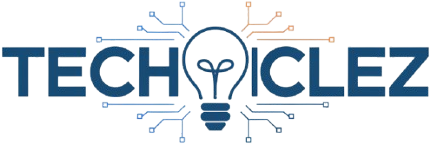Dihward is more than just a modern buzzword. It’s a mindset and framework for thriving in a world filled with rapid change, uncertainty, and disruption. At its core, dihward means adapting without losing your values. It teaches people, businesses, and governments how to innovate, evolve, and scale while staying anchored in integrity.
This idea has grown because traditional models of leadership and strategy are breaking down. Old ways are either too rigid to keep up or too reckless to trust. Dihward offers a third path: one that balances flexibility with ethical accountability.
Etymology and Core Meaning of Dihward
The word combines two parts:
-
“Dih” – symbolizing the inner core, the solid center that remains steady.
-
“Ward” – meaning protection, direction, or guardianship, as in “steward” or “forward.”
Together, the term represents a protector of core values in motion. Unlike pure resilience, which can resist needed change, or blind flexibility, which can lose direction, dihward defines structured adaptability.
Dihward vs. Related Concepts
Resilience vs. Dihward
Resilience means bouncing back after hardship. Dihward goes further. It encourages proactive foresight and alignment with values before disruption hits.
Antifragility vs. Dihward
Antifragility thrives on chaos. But not all chaos is ethical or sustainable. Dihward ensures growth comes with accountability and sustainability.
ESG vs. Dihward
Environmental, Social, and Governance (ESG) frameworks guide companies on responsibility. Dihward complements ESG by embedding a flexible but ethical lens across all decision-making, not just sustainability metrics.
The Six Principles of Dihward
-
Value Anchoring – Every choice must reflect unshakable ethical beliefs. Example: A startup rejecting shady data practices even if it costs growth.
-
Structured Flexibility – Adapt to change, but with guardrails. Example: A business pivoting products but keeping worker rights intact.
-
Proactive Foresight – Prepare for future risks before they arrive. Example: Governments planning climate resilience policies decades ahead.
-
Ethical Accountability – Own the consequences of decisions, especially when moving fast.
-
Resource Prudence – Use time, energy, and materials wisely with the long view in mind.
-
Collective Synergy – Progress works best when it’s shared, not hoarded.
These six principles make dihward a practical framework, not just theory.
Implementation Roadmap: From Individual to Organization
Step 1: Define Your Non-Negotiables
List the values you will never compromise on. Integrity, fairness, transparency whatever your foundation is.
Step 2: Simulate Disruptions
Ask, “If a major change forced us to move fast, would we break our values?” Then design policies to hold the line.
Step 3: Install Feedback Loops
Weekly retrospectives, quarterly audits, or digital dashboards help track ethical alignment.
Step 4: Align Networks
Build teams, partners, and vendors who share your values. One weak link can break the system.
With these steps, both individuals and large organizations can practice dihward instead of leaving it as an abstract idea.
Technology and Dihward
The digital era makes this concept more urgent. AI, cloud computing, and cybersecurity reshape the world daily. Without values, innovation can become dangerous.
-
AI Ethics: Dihward pushes developers to create fair, explainable, and accountable algorithms.
-
Cloud and Security: It demands privacy-first design, zero-trust systems, and encrypted data.
-
Analytics and ML: With proactive foresight, models get reviewed for bias and drift before harm happens.
In short, dihward ensures that technology evolves with humans in mind.
Risk and Ethics Matrix
Any system practicing dihward needs to track risks. A simple framework:
| Risk | Example | Mitigation |
|---|---|---|
| Data misuse | Selling user data without consent | Transparent opt-ins + audits |
| Resource waste | Cloud overuse | Energy-efficient design, auto-scaling |
| Bias in AI | Hiring tool excluding women | Bias testing + diverse training data |
By mapping risks, teams avoid being surprised by problems.
KPI Framework: Measuring Dihward in Action
Ethics and adaptability may sound abstract, but they can be measured.
-
Leading Indicators – % of decisions reviewed ethically, number of scenario tests completed, team adoption rates.
-
Lagging Indicators – Customer trust scores, compliance audit results, employee retention, reduced incidents.
Tracking both leading and lagging KPIs proves whether dihward is delivering real-world value.
Case Studies: Dihward in Action
Public Policy
During the COVID-19 pandemic, countries balancing health and economy showed dihw ard principles. They adapted policies but protected transparency and trust.
SaaS Startup
A product team cut release times by 30% while maintaining strong ethical guardrails. Customers reported higher trust and lower churn.
Personal Growth
An executive journaled values daily, made career choices around them, and avoided burnout while still earning promotions. This is dihward applied at the individual level.
Brand, Legal, and Identity Use
Dihward is also a strong brand term. It’s unique, easy to say, and rich in meaning. Companies can trademark it, build tone guidelines, and use it across products:
-
Dihward Labs for AI projects.
-
The Dihward Protocol for ethical blockchain systems.
-
Dihward Academy for leadership training.
By owning the identity, businesses can signal trustworthiness and stand out in crowded markets.
Playbook and Checklist
Quick-start guide for teams adopting dihward:
-
Define 3 core values.
-
Create a 90-day roadmap with ethical checkpoints.
-
Add quarterly reviews with a cross-functional ethics board.
-
Publish transparent progress reports.
-
Reward teams who model dihw ard behavior.
This playbook makes the concept actionable.
Common Misconceptions About Dihward
-
❌ “It slows progress.”
✅ It actually accelerates trust, which speeds adoption. -
❌ “It’s only philosophy.”
✅ It includes metrics, KPIs, and governance tools. -
❌ “It can’t scale.”
✅ It works at individual, team, and enterprise levels.
Community and Adoption Strategy
To spread dihward, build champions inside organizations. Give them training, templates, and communication plans. Run quarterly workshops. Celebrate wins publicly.
Culture spreads faster when people see practical benefits.
Future Outlook of Dihward
The future will demand dihward everywhere:
-
Education – Leadership and ethics courses teaching it.
-
Standards – Regulatory bodies may formalize ethical adaptability frameworks.
-
Tech Compliance – AI and digital products needing proof of dihw ard practices.
As global crises grow, the world will need not just innovation, but innovation with ethics.
FAQs About Dihward
Q1: What does dihw ard mean in simple words?
It means staying true to your values while adapting to change.
Q2: How do I practice dihw ard daily?
Set your core values, test them against challenges, and keep feedback loops.
Q3: Why is it important for businesses?
It balances growth with responsibility, leading to trust, loyalty, and long-term success.
Q4: Is it just theory?
No. It’s already visible in AI ethics, ESG, and sustainable business.
Conclusion
The world is changing fast, but speed without integrity leads to chaos. Dihward is the framework that ensures growth comes with balance. It blends ethics with adaptability, giving individuals, companies, and governments a clear way forward.
If resilience is about survival, dihw ard is about thriving with values intact. It’s not just a concept. It’s a roadmap for ethical success in the 21st century.

